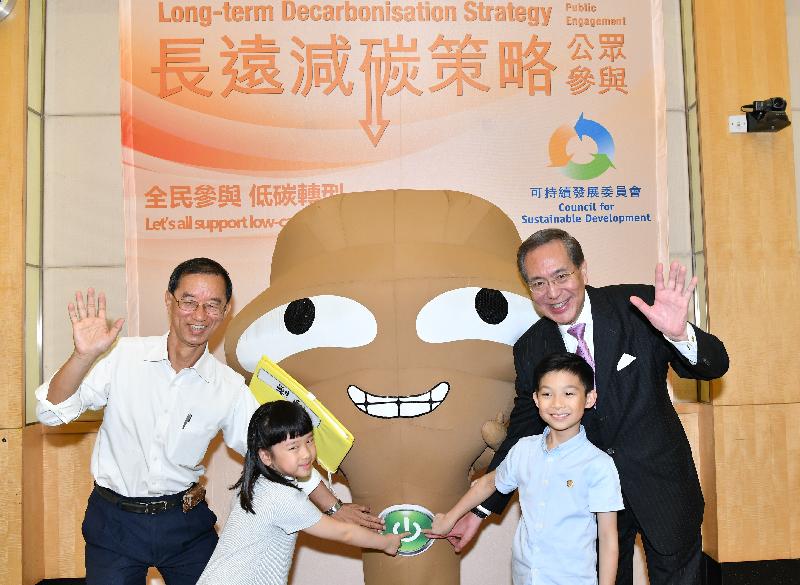The following is issued on behalf of the Council for Sustainable Development:
At the invitation of the Hong Kong Special Administrative Region Government, the Council for Sustainable Development today (June 14) launched the public interaction phase of the public engagement on Long-term Decarbonisation Strategy. The public engagement aims to arouse public awareness on the impact of carbon emissions, and gauge the views of the community in developing feasible strategies for carbon reduction, with a view to making recommendations to the Government by the end of this year.
Speaking at the press conference, the Chairman of the Council, Professor Arthur Li, said, "Climate change is an imminent global challenge. Mitigating climate change is not just for ourselves, but also for our children and future generations. Concerted efforts of the Government and civic society are required to promote and implement the decarbonisation strategy."
The public engagement, adopting a bottom-up and stakeholder oriented approach, provides a platform to gauge public views. The Support Group on Long-term Decarbonisation Strategy, comprising experts and stakeholders from different fields, was formed earlier to assist the Council in planning and implementing this public engagement exercise.
The Convenor of Support Group, Mr Lam Chiu-ying, announced at the press conference a series of public engagement activities to be held in the coming three months, including regional forums, a youth forum, school activities and briefing sessions. He encouraged members of the public to actively participate.
The Council also released a Public Engagement Document to highlight three main topics for public discussion:
* Transition towards a low-carbon society
* Reducing energy use and further decarbonising electricity generation
* Low-carbon transport in a smart city
The public interaction phase of the public engagement will run until September 20, 2019. The Public Engagement Document can be downloaded from the Council's dedicated website (www.susdev.org.hk). Members of the public are invited to send the views collection forms (included in the Public Engagement Document) to the Council Secretariat via email (comments@susdev.org.hk), mail (46/F, Revenue Tower, 5 Gloucester Road, Wan Chai, Hong Kong) or fax (3150 8168).

